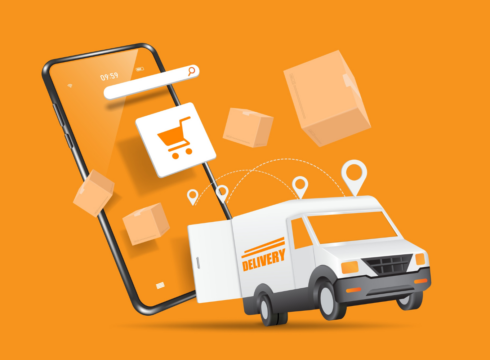Initially synonymous with grocery delivery, hyperlocal delivery has expanded its horizons to include a diverse array of products, giving rise to quick commerce
In the world of quick commerce, the diversification of product offerings extends beyond essentials to encompass a spectrum of lifestyle and entertainment needs
With the right strategies and technology in place, quick commerce has the potential to revolutionise the way we shop for everyday essentials and beyond
Inc42 Daily Brief
Stay Ahead With Daily News & Analysis on India’s Tech & Startup Economy
In the rapidly evolving landscape of ecommerce and delivery services, the concept of hyperlocal delivery has taken centre stage. Initially synonymous with grocery delivery, hyperlocal delivery has expanded its horizons to include a diverse array of products, transforming the way consumers shop for everyday essentials and beyond.
This evolution has given rise to what is now termed “quick commerce,” where speed and convenience reign supreme. As this market continues to burgeon, it’s essential to explore how diversifying product offerings in quick commerce is shaping the future of hyperlocal delivery.
Traditionally, hyperlocal delivery primarily catered to grocery shopping, capitalising on the demand for convenience and time-saving solutions. However, with changing consumer preferences and technological advancements, the scope of hyperlocal delivery has broadened significantly.
Today, consumers expect swift delivery not only for groceries but also for a plethora of products ranging from pharmaceuticals and electronics to pet supplies and household goods.
The emergence of quick commerce players has played a pivotal role in this diversification. These agile and tech-savvy companies leverage advanced logistics infrastructure and data analytics to offer a wide range of products with lightning-fast delivery times, often within minutes.
By tapping into the hyperlocal market, these platforms bridge the gap between online convenience and instant gratification, catering to the on-demand needs of modern consumers.
Key Drivers Of Growth
One of the key drivers behind the expansion of product offerings in quick commerce is the growing demand for immediacy. Today’s consumers are accustomed to seamless, on-demand experiences facilitated by the likes of ride-hailing apps and streaming services.
As such, they expect similar levels of convenience when it comes to shopping for everyday essentials and impulse purchases. By diversifying their product offerings, quick commerce platforms can meet this demand head-on, providing consumers with instant access to a wide range of goods whenever they need them.
In the world of quick commerce, the diversification of product offerings extends beyond essentials to encompass a spectrum of lifestyle and entertainment needs. From stationery supplies for home offices to books that ignite the imagination, and toys that spark joy in children, these categories are integral to the holistic shopping experience.
Stationery items such as pens, notebooks, and desk organisers cater to professionals and students alike, ensuring productivity and organisation. Books transport readers to distant lands and diverse worlds, offering endless possibilities for learning and entertainment.
Meanwhile, toys and party supplies add an element of fun and celebration to everyday life, whether it’s a child’s birthday or a festive gathering. By incorporating these categories into their offerings, quick commerce platforms enrich the shopping journey, catering to a diverse range of interests and occasions.
Furthermore, the COVID-19 pandemic has accelerated the adoption of online shopping and delivery services across the globe. With social distancing measures and lockdowns in place, consumers increasingly turned to ecommerce for their shopping needs, including essentials beyond groceries.
This shift in consumer behaviour has reinforced the importance of hyperlocal delivery and prompted retailers to expand their offerings to meet evolving demands.
Understanding Key Challenges
Diversifying product offerings in quick commerce isn’t just about meeting consumer demand; it’s also about capitalising on untapped market potential. By expanding beyond groceries, delivery platforms can tap into new revenue streams and capture a larger share of the hyperlocal market.
Whether it’s partnering with local merchants or integrating third-party vendors, these platforms have the opportunity to create a robust ecosystem that caters to diverse consumer needs.
Additionally, the integration of technology has been instrumental in driving the expansion of product offerings in quick commerce. Advanced algorithms and machine learning algorithms enable platforms to optimise delivery routes, manage inventory effectively, and personalise recommendations based on consumer preferences.
Furthermore, the proliferation of mobile apps has made it easier than ever for consumers to browse and purchase products on the go, further fueling the growth of quick commerce.
However, diversifying product offerings in quick commerce also presents its fair share of challenges. One of the primary concerns is maintaining the quality and consistency of service across a broader range of products.
Unlike groceries, which have relatively standardised packaging and handling requirements, other products may require specialised storage and transportation, increasing the complexity of logistics operations. Moreover, ensuring timely delivery becomes even more critical when dealing with perishable items or sensitive goods like pharmaceuticals.
Another challenge lies in striking the right balance between variety and efficiency. While offering a diverse range of products is essential for attracting a wide customer base, it can also lead to increased operational complexity and overhead costs.
Quick commerce platforms must carefully curate their product offerings to ensure they align with consumer preferences while maintaining profitability and operational efficiency.
In Conclusion
In conclusion, the diversification of product offerings in quick commerce represents a significant paradigm shift in the hyperlocal delivery landscape. By expanding beyond groceries, delivery platforms have the opportunity to cater to a broader range of consumer needs while tapping into new revenue streams.
However, this expansion comes with its own set of challenges, including maintaining service quality, optimising logistics operations, and balancing variety with efficiency. Nevertheless, with the right strategies and technology in place, quick commerce has the potential to revolutionise the way we shop for everyday essentials and beyond.
Note: We at Inc42 take our ethics very seriously. More information about it can be found here.


